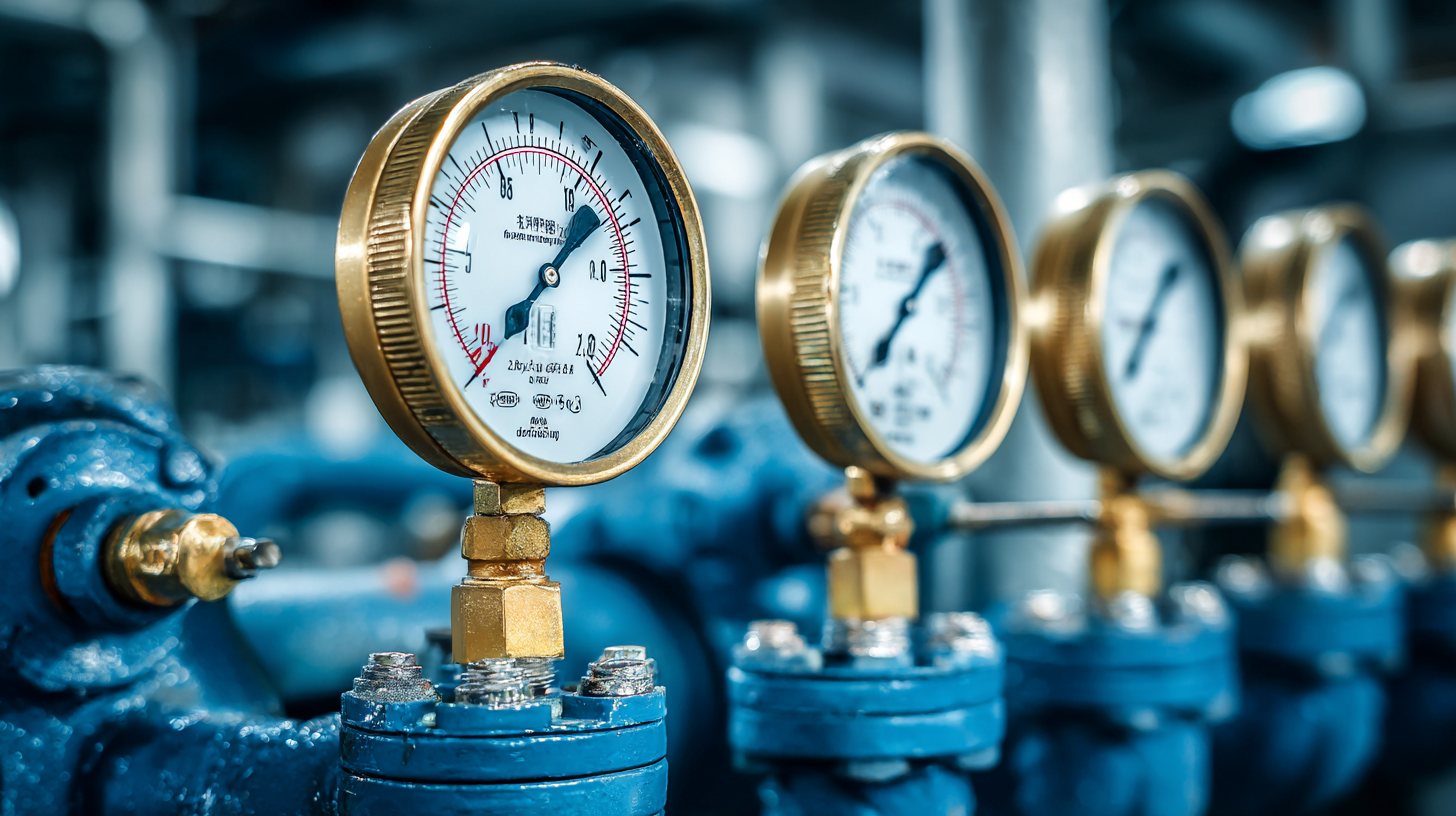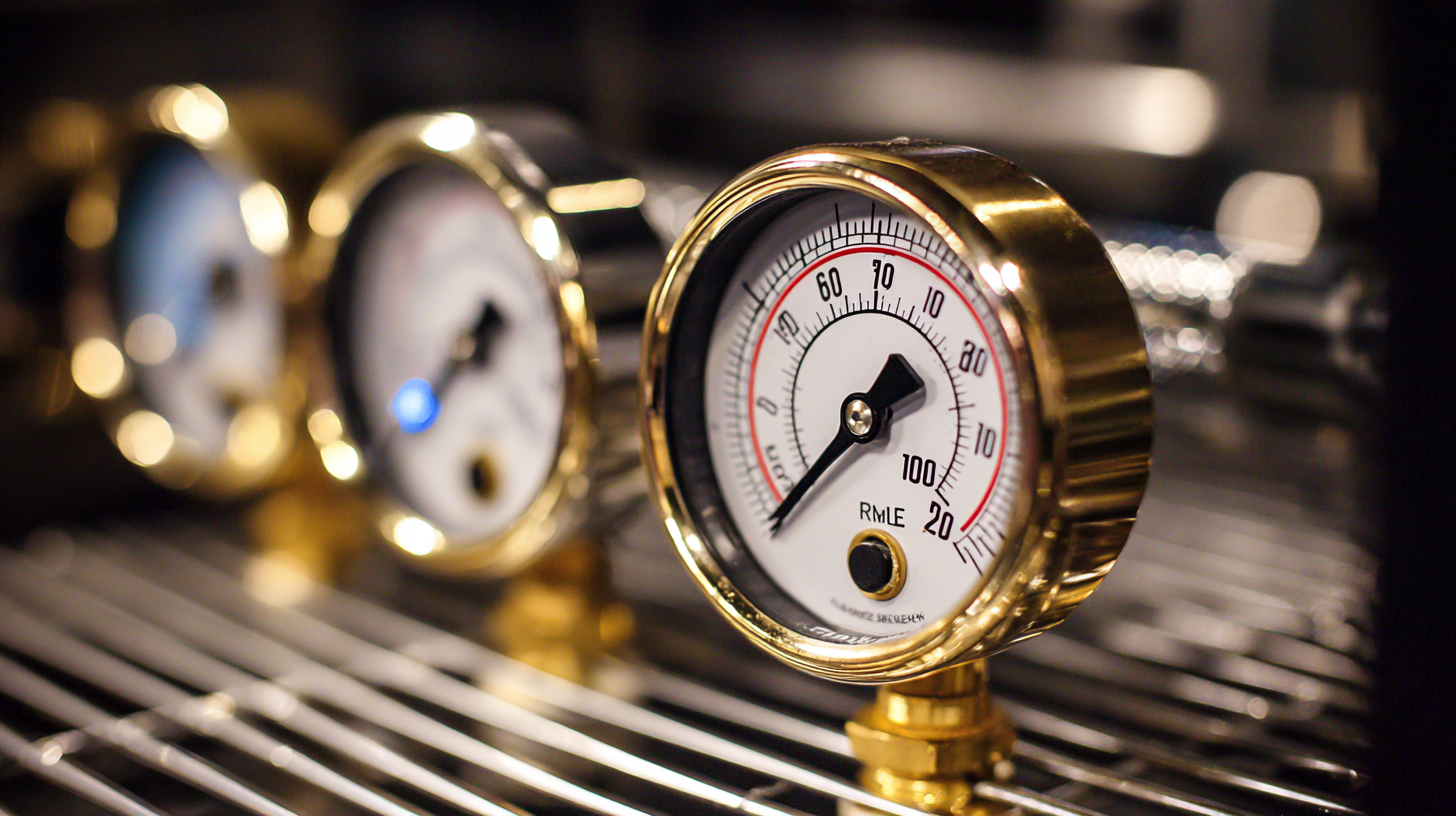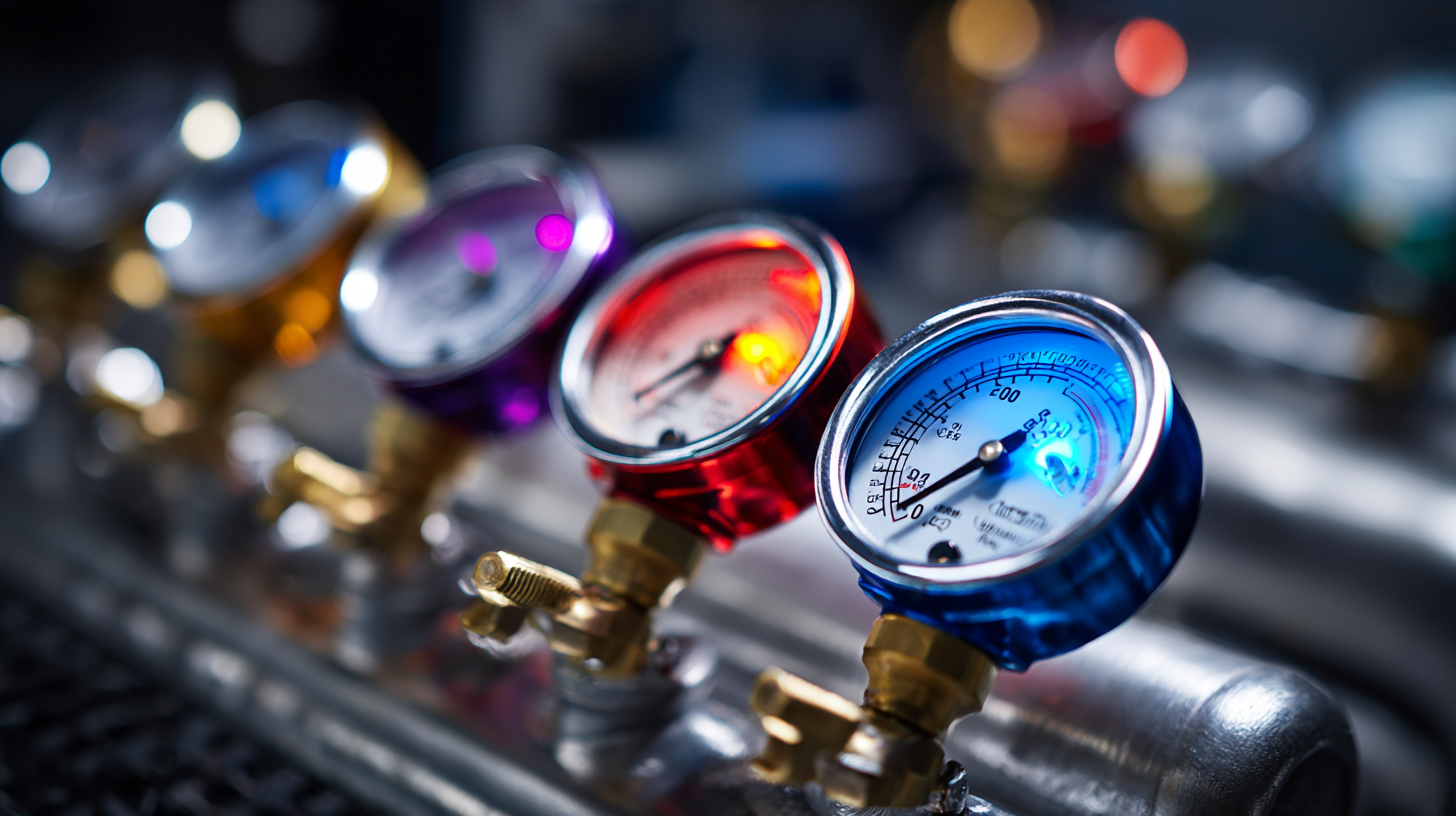7 Essential Tips for Choosing the Right Refrigeration Gauges to Boost Efficiency by 30%
In the competitive landscape of refrigeration systems, selecting the right refrigeration gauges can significantly impact operational efficiency. According to a recent report by the HVAC Research Institute, optimizing gauge selection and utilization can enhance system performance by up to 30%, leading to substantial energy savings and reduced maintenance costs. Improper gauge choices not only hinder performance but can also result in costly downtime, as noted in a survey by the National Association of Refrigerated Contractors which revealed that 40% of system failures are attributed to inadequate monitoring tools. By understanding the critical factors influencing gauge performance, professionals in the refrigeration industry can make informed decisions that not only elevate their operational standards but also contribute to sustainability efforts, aligning with the increasing demand for energy-efficient practices. Thus, mastering the process of selecting appropriate refrigeration gauges is essential for those looking to boost efficiency and maintain a competitive edge in the market.

Understanding the Different Types of Refrigeration Gauges: A Comprehensive Overview
When it comes to refrigeration systems, choosing the right gauge is crucial for optimal performance. There are several types of refrigeration gauges available, each designed for specific applications. The most common types include analog gauges, digital gauges, and compound gauges. Analog gauges provide a traditional approach, using mechanical movements to reflect pressure readings. They are known for their reliability but may lack the precision found in their digital counterparts.
Digital gauges, on the other hand, offer enhanced accuracy and often come with additional features such as temperature readings and data logging capabilities. They can simplify the diagnostics process by providing real-time feedback, making them an excellent choice for professionals who require quick and precise measurements. Compound gauges, which measure both vacuum and pressure, are particularly useful in HVAC applications where both extremes are encountered. Understanding these different types can help technicians select the optimal tools for improving efficiency and ensuring system longevity. By choosing the right gauge, businesses can experience significant boosts in operational efficiency, sometimes achieving improvements of up to 30%.
Key Features to Look for in Refrigeration Gauges: Accuracy and Durability Explained
When selecting refrigeration gauges, accuracy and durability are two critical features that can significantly impact your system's efficiency. According to a report by the American Society of Heating, Refrigerating and Air-Conditioning Engineers (ASHRAE), even a minor error in pressure readings can lead to a 10% decrease in system performance. Therefore, investing in high-precision gauges ensures that your refrigeration system operates within optimal parameters, ultimately enhancing efficiency and reducing energy consumption.
Durability is equally paramount, especially in environments with fluctuating temperatures and exposure to refrigerants. A study conducted by the International Institute of Refrigeration found that gauges manufactured with robust materials, such as stainless steel or high-impact plastics, can last up to 50% longer than standard models. This longevity not only reduces replacement costs but also minimizes downtime, ensuring your refrigeration system remains operational. By choosing gauges that boast both accuracy and durability, technicians can experience a significant boost in overall system performance and reliability.

The Impact of Refrigeration Gauge Calibration on System Efficiency: Data-Driven Insights
The calibration of refrigeration gauges plays a critical role in enhancing the efficiency of refrigeration systems. Accurate gauge readings are essential for diagnosing system performance and identifying potential issues. According to a report from the International Institute of Refrigeration, improperly calibrated gauges can lead to inefficiencies of up to 15%, resulting in **increased energy consumption** and higher operating costs. By ensuring gauges are regularly calibrated, technicians can reduce these inefficiencies, leading to substantial savings and improved operational reliability.
Furthermore, data-driven insights indicate that the correct calibration of refrigeration gauges can boost system efficiency by up to 30%. A study conducted by the Air Conditioning, Heating, and Refrigeration Institute revealed that precise pressure and temperature readings directly contribute to maintaining optimal refrigerant flow, which minimizes energy losses. When systems operate within their designated parameters, the longevity of critical components is enhanced, and the risk of breakdowns is significantly reduced. Accurate refrigeration gauge calibration thus not only serves as a preventive measure but also as a pivotal strategy in advancing overall system efficiency.
Evaluating Cost vs. Performance: Choosing the Right Refrigeration Gauges for Your Budget
When it comes to choosing refrigeration gauges, understanding the balance between cost and performance can significantly impact your operational efficiency. According to a report by the International Institute of Refrigeration, up to 30% of energy consumption in refrigeration systems can be attributed to inefficiencies linked to inadequate monitoring tools. This highlights the importance of selecting gauges that not only fit your budget but also enhance the performance of your system.
One crucial tip for making the right choice is to prioritize accuracy. Gauges that offer high precision readings may come at a higher initial cost but can lead to substantial savings in energy costs over time. A study by the U.S. Department of Energy found that accurate gauges can reduce energy waste by approximately 10% in commercial refrigeration systems. Therefore, investing in quality gauges could yield long-term financial benefits.
Furthermore, consider the gauge features that support advanced diagnostics. Digital gauges with additional functionalities, such as temperature and pressure logging, can provide deeper insights into system performance, helping to prevent costly breakdowns. Research from HVACR Business indicates that systems equipped with advanced monitoring tools have longer lifespans, reducing replacement costs in the long run. By evaluating these elements, you can make informed decisions that enhance efficiency while staying within your budget.
7 Essential Tips for Choosing the Right Refrigeration Gauges to Boost Efficiency by 30% - Evaluating Cost vs. Performance: Choosing the Right Refrigeration Gauges for Your Budget
| Gauge Type | Accuracy (%) | Cost ($) | Durability (Years) | Efficiency Improvement (%) |
|---|---|---|---|---|
| Digital Gauges | ±0.5 | 150 | 5 | 35 |
| Analog Gauges | ±1 | 50 | 10 | 20 |
| Wireless Gauges | ±0.75 | 200 | 4 | 30 |
| Manifold Gauges | ±1 | 120 | 8 | 25 |
| Smart Gauges | ±0.5 | 250 | 3 | 40 |
Industry Standards and Compliance: Ensuring Your Refrigeration Gauges Meet Regulatory Requirements
When selecting refrigeration gauges, one crucial aspect to consider is compliance with industry standards and regulatory requirements. According to the American Society of Heating, Refrigerating and Air-Conditioning Engineers (ASHRAE), proper gauge calibration and adherence to standards such as ASHRAE 15 can significantly reduce risks associated with refrigerant leakage and improve overall system efficiency. In fact, a report by the International Institute of Refrigeration indicates that systems operating with compliant gauges can enhance performance by up to 30%, benefiting both operations and the environment.
Moreover, ensuring your refrigeration gauges meet regulatory requirements not only helps in boosting efficiency but also in avoiding costly penalties. The U.S. Environmental Protection Agency (EPA) mandates specific standards for refrigerant management and leak detection to safeguard public health and the environment. Engaging with gauges that are certified by recognized bodies ensures that your systems are in alignment with these regulations. Industry leaders recommend regularly reviewing compliance checklists to ensure your equipment aligns with standards that evolve, helping businesses maintain their operational integrity and uphold environmental responsibilities.

Related Posts
-

7 Essential Tips for Choosing the Best Refrigeration Gauges for Your Needs
-

Understanding the Benefits of Liquid Filled Pressure Gauges for Optimal Industrial Performance
-

Navigating the Challenges of Precision Devices in Today's High Demand Markets
-

Top Strategies for Enhancing Efficiency with AC Gauges in the HVAC Industry
-

7 Reasons Why Investing in Test Instruments Can Transform Your Quality Assurance Process
-

Unlocking the Advantages of Advanced Test Instruments for Quality Assurance
Contact
3295 Cobb International Blvd.
Kennesaw, GA 30152
800-367-1377
sale@patiostools.com
Info
© 2023 - Marsh Instruments


